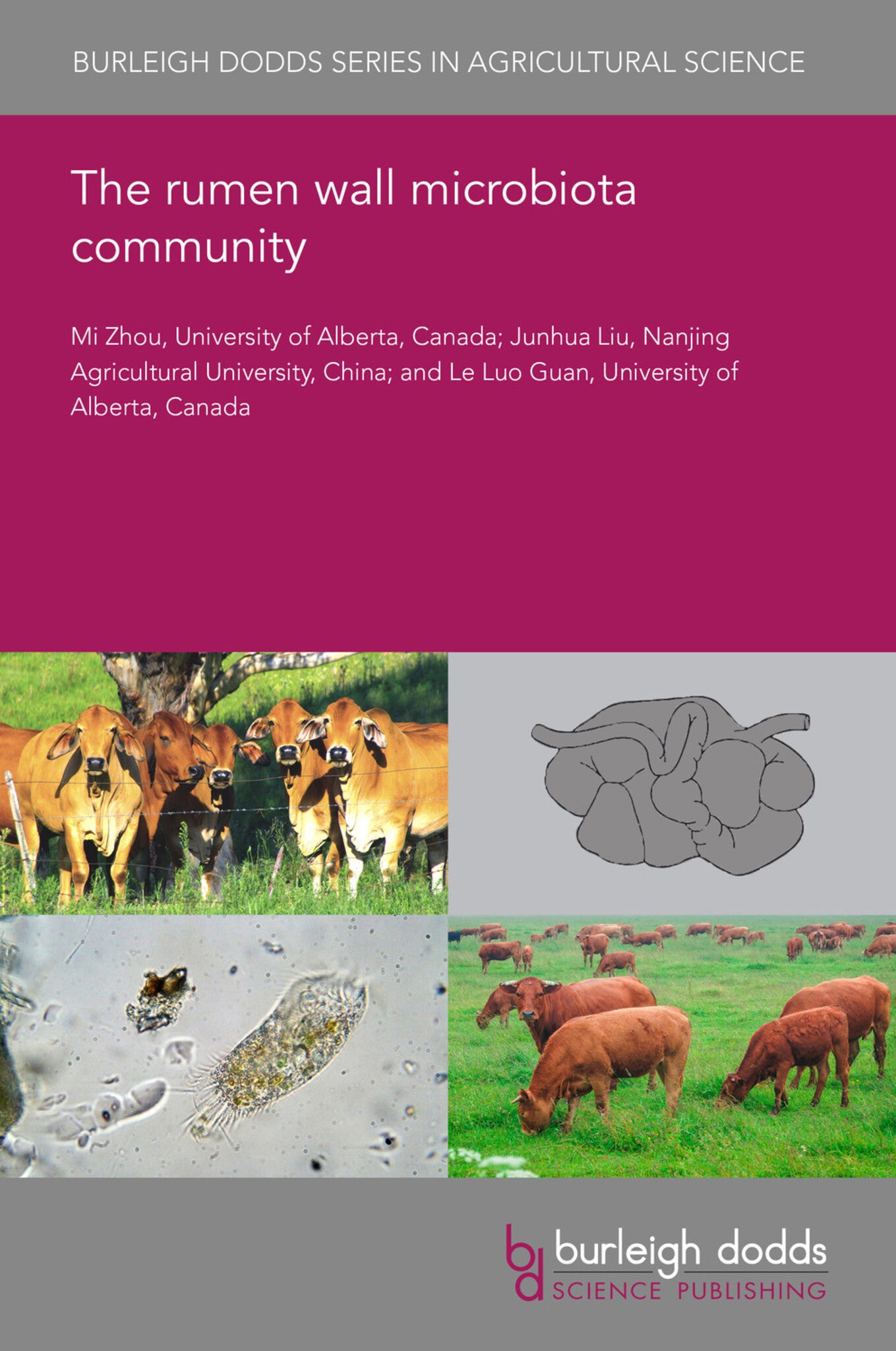We're sorry. An error has occurred
Please cancel or retry.
The rumen wall microbiota community
Regular price
£25.00
Sale price
£25.00
Regular price
£25.00
Unit price
/
per
Sale
Sold out
Re-stocking soon
The rumen microbes are usually divided into three distinct groups based on their habitats: the planktonic microbiota, feed particle associated microbiota, and the epimural microbiota. Among these t...
Read More

Some error occured while loading the Quick View. Please close the Quick View and try reloading the page.
Couldn't load pickup availability
- Format:
-
22 June 2020

The rumen microbes are usually divided into three distinct groups based on their habitats: the planktonic microbiota, feed particle associated microbiota, and the epimural microbiota. Among these three groups of microorganisms, the epimural community is the least studied and understood. Although the epimural microbiota only accounts for 1-2% of the total rumen microbial population, their functional importance should not be neglected. The members of epimural microbiota are the key players participating in oxygen scavenging, tissue recycling, urea metabolism, and nutrient transportation. The recent development of nucleic acid sequencing techniques has enabled us to better explore the composition and functional of this community. This chapter summarizes the current knowledge on the rumen epimural microbial community including its diversity, ecology, functions, and their relationships with host physiology. It also discusses the current challenges regarding the study of this microbial community. Finally, knowledge gaps and future perspectives for this research area are addressed.

Price: £25.00
Publisher: Burleigh Dodds Science Publishing
Imprint: Burleigh Dodds Science Publishing
Series: Burleigh Dodds Series in Agricultural Science
Publication Date:
22 June 2020
ISBN: 9781786768001
Format: eBook
BISACs:
TECHNOLOGY & ENGINEERING / Agriculture / Animal Husbandry, Dairy farming, TECHNOLOGY & ENGINEERING / Agriculture / Sustainable Agriculture, Sustainable agriculture, Animal husbandry

1 Introduction 2 The rumen wall microbial community 3 The development of the rumen wall microbiome 4 Factors affecting the epimural microbiome 5 The impact of the epimural microbiota on ruminant production 6 Challenges and future trends 7 Conclusions 8 Acknowledgement 9 References



